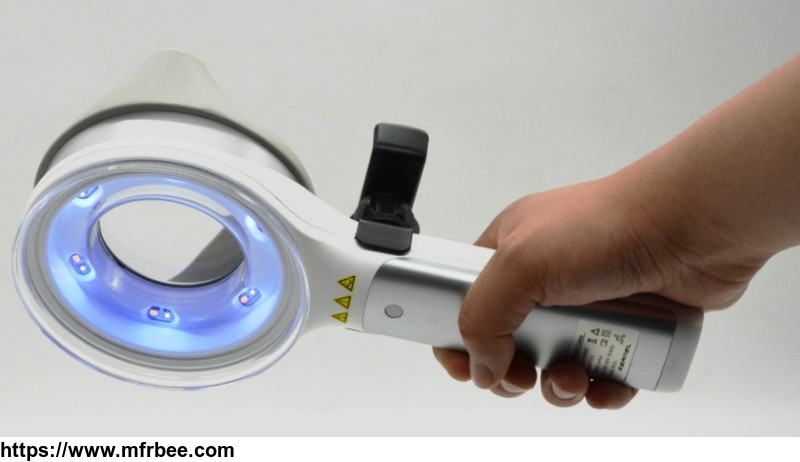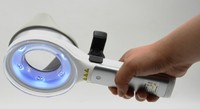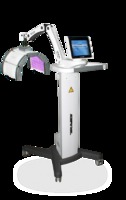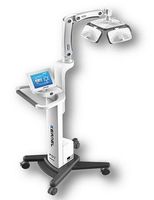Skin examination test medical wood's lamp KN-9000B
Product Quick Detail
- Place Of Origin
- china
- Minimum Order
- 1
- FOB Price
- USD $500.00 / Piece
- Packaging
- 1
- Delivery
- 15 Days
Specifications
Skin examination test medical wood\'s lamp KN-9000B

what is the wood\'s lamp
Wood’s Lamp is a long-wave ultraviolet light (black light)source that can stimulate fluorescence and is currently used as a screening procedure in dermatology offices across the United States. It was invented by Robert Williams Wood in 1903, but the light was not originally created for dermatology. It wasn’t until 1925 that a Wood’s Lamp had a dermatological application when Margarot and Deveze used the light to detect fungal infections in the hair .Normal skin will not glow under the lamp, but infected skin will fluoresce. Wood’s Lamp is a common, first step method towards diagnosing skin infections in the United States.
Appliation:
The Wood\'s lmap tet is done to help to detect several conditions affecting the skin, including:
Bacterial infections
Fungal infections
Ectoparasites infestations
Skin coloring changes
Indications:
.Some skin diseases such as vitiligo, acne and host of other cause the skin to fluoresce
Vitiligo
Bacterial Infections
Acne
Porphyria
Erythasma
Alopecia
Tinea Versicolor
Fungus &Fungal Infections
Head Lice and their nits, Fluoresce under black light
Ringworm
Scabies
Child abuse/bruising can often be discerned with a wood\'s light
| Infection | cause | color |
| Tinea (Pityriasis)versicolor | Fungal | Yellowish green or orange |
| Erythrasma | Bacterial | Red |
| Scabies | Mites | |
| Vitiligo | Cell death | White |
| Porphyria Cutanea tarda | Genetic or exposure | Red-pink |
| Pseudomona infections | Bacterial | Green |
Specification
Small size, light weight, easy for patient to carry;
l Products using UVA light source, which can be used to detect pigment abnormalities, skin infections, porphyry in metabolism abnormalities. Avoiding chemical grinding excessively, and grasping the treatment of skin diseases timely.
l Hand-held and simple operation, flexible irradiation area, easy to grasp, more suitable for use at home
l Equipped with observation window and shade cloth, users also can be clearly observed and photographed under normal circumstances;
l With UVA and white light two LED light source, make longer life, not only for a variety of skin diseases, can also be used for other medical examination lighting.
l Observation Windows using opaque ultraviolet magnifying lens, can avoid the ultraviolet radiation damage to the human eyes.
l Optional mobile phone camera support, easy for users to shoot pathology images, can grasp the development of disease and treatment, can also be used in the field of medical research and teaching.
.Main Tech parameters
Internal power:DC6~8.4V >0.5A
Ø The power adapter:AC 100-240V,50/60Hz±2%
Ø Battery:18650 7.4V 2.2Ah
Ø Charging time:6h(Power reached85%)
Ø battery endurance:2.5h
Ø Input power:28A
Structure: Hand-held
l Visual lens diameter: ø65mm±5mm
l Working distance:5cm±1cm
l Output wavelength:320-400nm(Peak wavelength:365nm±3nm)
l UV radiation intensity:0.6~2.5mW/cm2
l illumination:≥1200Lux
l Visible lens magnification: 2 times±20%

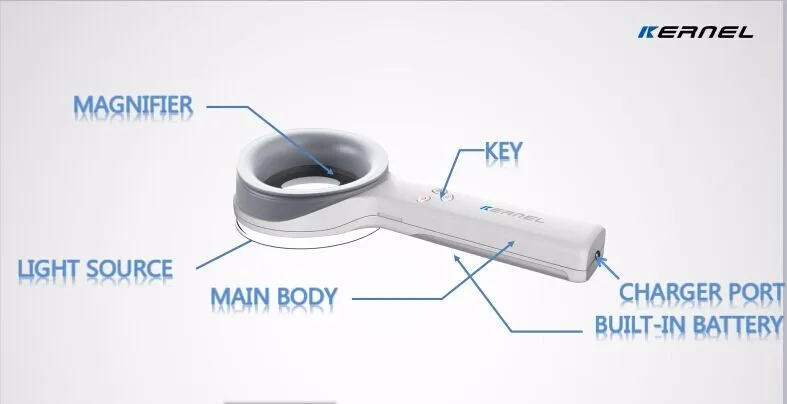
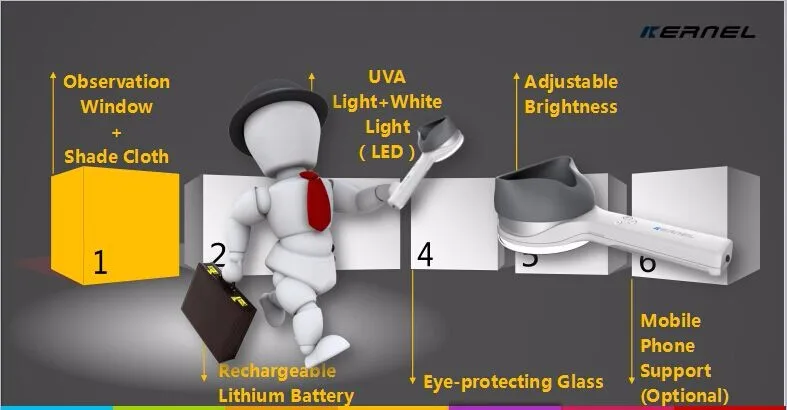
- Country: China (Mainland)
- Business Type: Manufacturer
- Market: Asia,Middle East,Europe,Americas
- Founded Year: 1997
- Contact: David F
